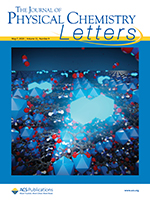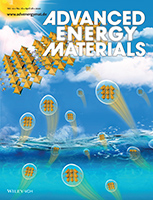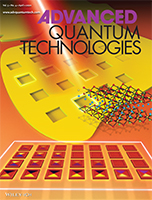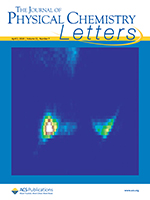In the fight against SARS-CoV-2, scientists have been working on identifying neutralizing antibodies that could be used in preventative treatments or as post-exposure therapies. The latest findings, which include data from the ALS, indicate that antibodies from SARS survivors could potently block entry of SARS-CoV-2 into host cells. Read more »![]()
ALS Work Using Scattering/Diffraction
These techniques make use of the patterns of light produced when x-rays are deflected by the closely spaced lattice of atoms in solids and are commonly used to determine the structures of crystals and large molecules such as proteins.
Efficient Organic Solar Cell with 16.88% Efficiency Enabled by Refined Acceptor Crystallization and Morphology with Improved Charge Transfer and Transport Properties
Feng Liu and co‐workers report a detailed structure‐performance relationship to help understand the success of Y6 non‐fullerene acceptors. Through the analysis of the single crystal structure of Y6, it is found that Y6 forms a polymer‐like conjugated backbone through its banana‐shaped structure and π‐π interactions between molecules, and forms a 2D electron transport network under the ordered arrangement of the lattice. Read more »
Divergent Adsorption-Dependent Luminescence of Amino-Functionalized Lanthanide Metal–Organic Frameworks for Highly Sensitive NO2 Sensors
A novel gas-sensing mechanism exploiting lanthanide luminescence modulation upon NO2 adsorption is demonstrated. Two isostructural lanthanide MOFs are used, including an amino group as the recognition center for NO2. Energy transfer from the ligands to Ln is strongly dependent on the presence of NO2, resulting in an unprecedented photoluminescent sensing scheme. Read more »
Coordination Engineering of Single-Crystal Precursor for Phase Control in Ruddlesden-Popper Perovskite Solar Cells
Chaochao Qin, Alex K.-Y. Jen, Kai Yao and co-workers describe a generic guideline for fine tuning colloidal properties of 2D perovskites via coordination engineering of the single-crystal precursor solution. In nonpolar co-solvent media, the derived colloidal templates prefer to grow along the vertical direction with a narrow phase variation, elucidating the critical role of colloidal chemistry in low-dimensional perovskite solar cells. Read more »
Study Leads to Firmer Grasp of Biochemical “Reactive Handle”
Protein crystallography provided new insight into a functional group of molecules that, if added to bacterial enzymes, could enable a variety of alterations to the bacteria’s polymer output. Tweaking enzymes to produce these “reactive handles” is a first step toward biosynthesizing diverse polymers with tailored properties. Read more »
Assembly Lines for Designer Bioactive Compounds
Researchers successfully bioengineered changes to a molecular “assembly line” for bioactive compounds, based in part on insights gained from small-angle x-ray scattering at the ALS. The ability to re-engineer these assembly lines could improve their performance and facilitate the synthesis of new medically useful compounds. Read more »![]()
![]()
Seeing ‘Under the Hood’ in Batteries
To push battery performance, researchers want to learn how the individual ingredients of battery materials behave beneath the surface. But many techniques only scratch the surface of what’s at work inside batteries. A high-sensitivity x-ray technique is attracting a growing group of scientists because it provides a deeper, more precise dive into battery chemistry. Read more »
Staff at Berkeley Lab’s X-Ray Facility Mobilize to Support COVID-19-Related Research
X-rays allow researchers to map out the 3D structure of proteins relevant to diseases at the scale of molecules and atoms, and the ALS has been recalled to action to support research related to COVID-19, the coronavirus disease that has already infected about 2 million people around the world. Read more »
Highly Enhanced Curie Temperature in Ga‐Implanted Fe3GeTe2 van der Waals Material
Researchers report an effective and reliable method of increasing the Curie temperature of ferromagnetic Fe3GeTe2 (FGT) van der Waals (vdW) material by Ga implantation, opening a new opportunity for tailoring the magnetic properties of vdW materials beyond room temperature for future spintronics applications. Read more »
Full Energy Range Resonant Inelastic X-ray Scattering of O2 and CO2: Direct Comparison with Oxygen Redox State in Batteries
The evolving oxygen state plays key roles in the performance and stability of high-energy batteries involving oxygen redox reactions. Comparison of the mRIXS profiles of four different oxygen states reveals that oxygen redox states in batteries have distinct widths and positions along the excitation energy. Read more »
- « Previous Page
- 1
- …
- 18
- 19
- 20
- 21
- 22
- …
- 39
- Next Page »









